31 Days, 31 Lists: 2022 Unconventional Children’s Books

Recently the internet was all ah-flutter at an AI-created picture praising (you guessed it) AI created products. It was, in the broadest sense of the term, an unconventional children’s book. That kind of schlock, however, will not stand. I prefer my children’s books completely different. Out there. Original. One-of-a-kind. So today, we salute the creators and talents that went into making books that are just a little bit (or, in some cases, a LOT) different. And no, they’re not all European (though, to be honest, quite a few are).
As ever, please check out Travis Jonker’s The Most Astonishingly Unconventional Children’s Books of 2022. We see different books (I still haven’t been able to get my hands on a copy of Typo and Skim), but the love is there just the same.
ADVERTISEMENT
ADVERTISEMENT
Curious about other unconventional titles? Then check out these previous lists:
2022 Unconventional Children’s Books
Air Miles by John Burningham and Bill Salaman, ill. Helen Oxenbury
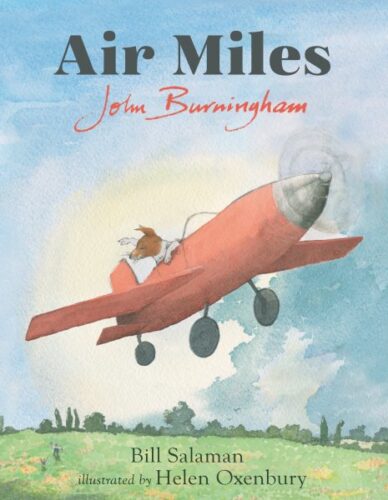
There is no category on any of my lists that this book slots into neatly. How do you categorize a book done in loving ode to your spouse who passed away? This is probably the neatest example I’ve seen this year of finishing a work for a loved one, keeping it in their spirit, and making it an honestly good picture book in and of itself. Without any context at all, you’d probably read this and figure that it was a good book to hand to a child that has an elderly pet die. It is, but it’s a lot more than that. You see, John Burningham (you know him from Mr. Gumpy’s Outing, amongst many many other titles) was married to Helen Oxenbury. In terms of picture book creators, that’s practically royalty. John wrote a picture book years ago called Motor Miles, about their “much-loved but very difficult Jack Russell”. John had intended to write a follow up called Air Miles, but grew too ill to finish it and asked Helen to do it for him. So when John passed, Helen turned to his friend Bill Salaman and asked him to write the story from what he remembered John telling him about it. The end result is as loving an ode to the original Miles as it is to John himself. In her note at the beginning Helen writes as well that “Three of John’s illustrations are also included in the book, and we have used his thumbnail sketches for the endpapers.” Loving and gentle, you don’t need to be a dog lover to enjoy this one.
The Bird Coat by Inger Marie Kjølstadmyr, ill. Øyvind Torseter, translated by Kari Dickson
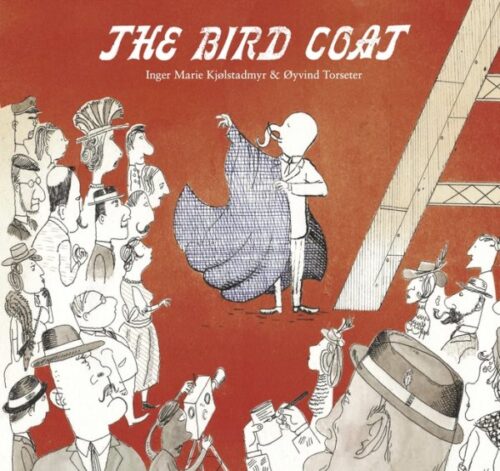
The danger of creating any kind of list of “unconventional” titles is the question “Unconventional by what standards?” American? Undoubtedly. Americans, as a rule, are desperately uninterested in whatever it is that’s going on in the rest of the world. And even the most open-minded you’ll meet will hem and haw when confronted with picture books from other countries that produce art that feels “odd” to us. This Norwegian import is just the loveliest of examples. The author herself has written a rather fascinating two-page Author’s Note at the end in which she essentially justifies writing a picture book where the protagonist of the story tries something big and bold and dies as a result. She writes, “In this story, there is no place for sentimentality, depression, or darkness, even though death arrives. In this story, life goes on.” There’s something so stirring about that. The tale begins with a boy getting a haircut, remarking to his barber on a portrait of a long-nosed gentleman. Who was he? The barber then launches into the story of Pierre the tailor, who harbored a dream of flying from the Eiffel Tower. It’s such an interesting fable, cut into periodically by the barber trying to get a detail here or there just right. There’s not much of a moral here. Instead, it just feels like a glimpse into another person’s mind, if only for a second. Slot it into the category of picture books where the protagonist dies, and that’s okay.
Blaze and the Castle Cake for Bertha Daye by Claude Ponti, translated by Alyson Waters and Margot Kerlidou
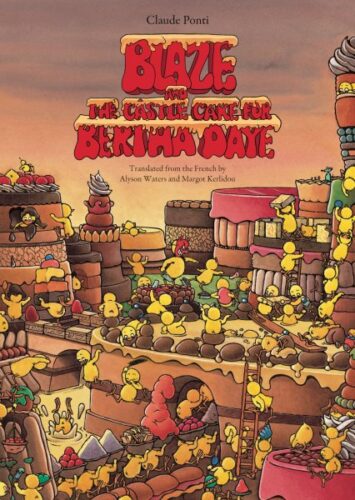
Claude Ponti doesn’t care what you think a picture book should be. Claude Ponti is going to make his own dang, wackadoodle, weirdo, wild, crazed, chick-infused, patisserie-injected book and devil take the hindmost! I mean, I’ve always loved him. My Valley? That book was big and epic and strange and . . . cozy? This book doesn’t really attempt to replicate that coziness but it sure does work by its own internal logic. The plot, such as it is, follows a group of chicks that are working hard to gather the ingredients to make the world’s largest, most extravagant birthday cake for their friend Bertha Daye. Do not be fooled into believing that Bertha is in any way important to this story. She is not. The chicks then proceed, tiny anuses present on every page, to gather and construct a cake that will make you seriously salivate when the chocolate starts flowing. The true reason to find the book, of course, is the party scene. I don’t know how copyright laws work, exactly. Whatever I thought was illegal is clearly not the case, because Ponti takes this wild joy in presenting everyone from Betty Boop and Superman to Yoda, Maggie Simpson, and (perhaps most fascinating of all) the three chefs from Maurice Sendak’s In the Night Kitchen. If you like books with gigantic delicious French pastries, boy oh boy do I have a book for you!
Boobies by Nancy Vo
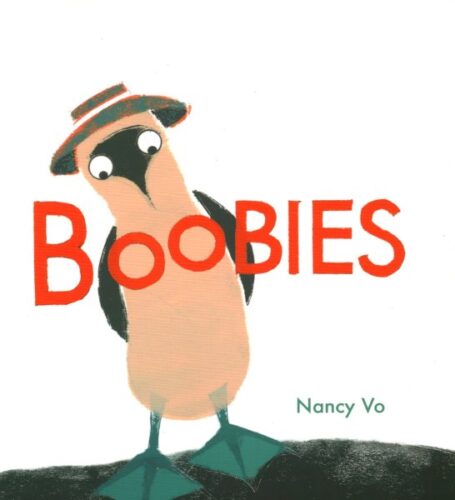
Remember that board book from a couple years ago What Does Baby Want? by Tupera Tupera? If you ever want to restore your faith in humanity, check out the reviews on Amazon which, as of this writing, are almost universally positive. That book dared to break the taboo of women’s breast in children’s literature, possibly because it showed them as practical tools for feeding infants. Boobies by Nancy Vo is for an older crowd and has a good strong sense of humor. After all, if you cannot find the funny in a blue-footed booby wearing a snazzy summer hat and a bikini top, we may have to rethink our friendship here. It’s a Canadian creation this book, which probably explains a lot. Chock full of fascinating breast-related facts, this is part of the ever growing trend of helping kids (and, quite frankly, adults) be comfortable with all the different kinds of bodies out there. One stop shopping for all things booby related.
The Curiosities by Zana Fraillon, ill. Phil Lesnie
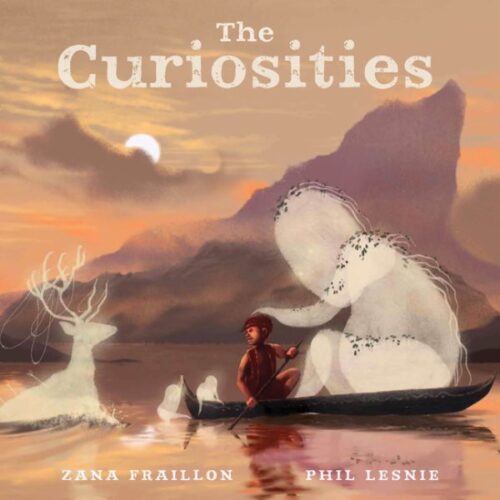
When the Curiosities choose Miro as their nesting space they give him the ability to sense such wonderful things, but sometimes their presence becomes too much to handle. A celebration of neurodiversity in a Filipino space. On a first read, and without any context at all, I knew right away that this book was smarter than I was. It has a very clear sense of what it’s talking about, but the metaphor is left WIDE open to interpretation. Once you read the backmatter, of course, all is much clearer. But I was so interested in how much of a true collaboration the project was. Fraillon approached this as a way of talking about her child’s Tourette’s syndrome. Then Lesnie found direct links to Filipino culture, the aswang, and the Babaylan. The end product just feels so natural. Like it was a book that was always meant to be. Highly recommended.
Days Like This by Oriane Smith, ill. Alice Gravier, translated by Luba Markovskaia
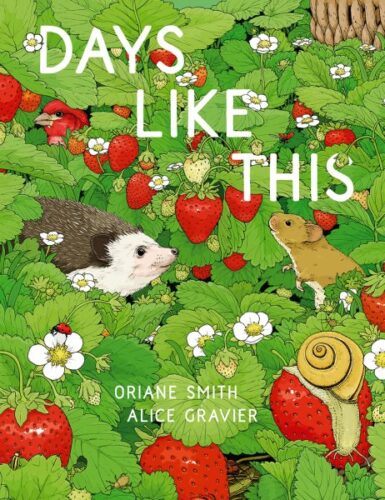
Depending on the age of the child reading this book, I suspect that there will be two entirely different ways of reading this. For the younger kids, one way will be with mild befuddlement. You see, the book is one text, told twice, one on the left page, and one on the right. And the points of view are different. One is higher than the other. One, in fact, seems to come from a larger creature than the other. As you go through it, you never quite know whose p.o.v. you’re seeing precisely, until you get to the big reveal at the end. That reveal will act as a kind of revelation for the youngers. For the older kids, they’ll catch on more quickly. They may even start to debate what the smaller creature might be. It seems to be in the trees a lot. It leaves significant footprints at one point. The meticulous line drawings are marvelously done, and it’s so much fun to compare one side to another. I was also inordinately pleased with a final Authors’ Note that admits that artistic liberties were taken with the squirrel’s vision. “Factually speaking, squirrels have dichromatic vision, which means they can only make out certain colors.” This fact was elided for this book, but I very much appreciate that they noted it at all. A strange, wonderful telling.
Gotcha! A Funny Fairy Tale Hide-and-Seek by Clotilde Perrin, translated by Daniel Hahn
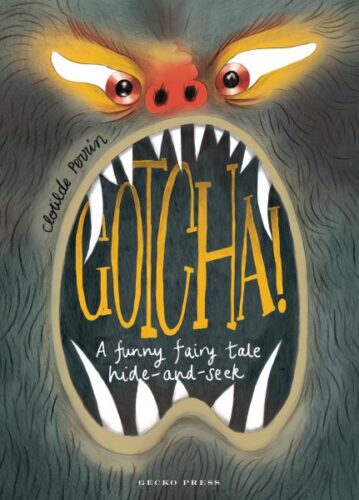
There is a quote at the beginning of this book. “Perhaps all the dragons in our lives are princesses who are only waiting to see us act, just once, with beauty and courage” – Rainer Maria Rilke, Letters to a Young Poet. Drop the mic, Perrin’s done. If you’ve ever seen a Clotilde Perrin book on American shores then you know that it’s a bit of a wild ride. First off, this book clocks in at a marvelous 15” tall and, at least in this case, contain 40+ flaps. Like her previous title Inside the Villains, you’re playing with familiar fairytale tropes as you try to hide from an array of monsters. Translator Daniel Hahn gets extra points for coming up with terms like “frightful fur and feculent feet.” There’s also so much to find in the corners and crannies that this book is guaranteed to last you a long, long time. Also, there is a monster’s butt on the back of the book, and it’s adorable. Who are you to say no to a cute monster butt?
How to Eat a Book by Mrs. & Mr. Macleod
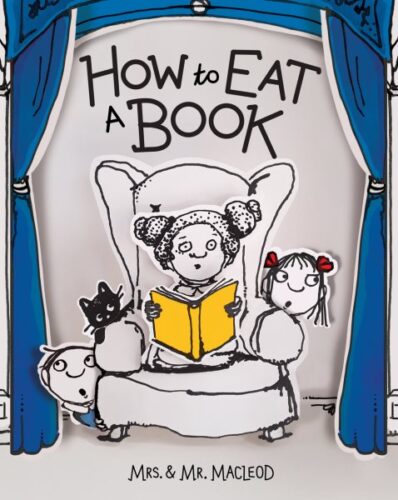

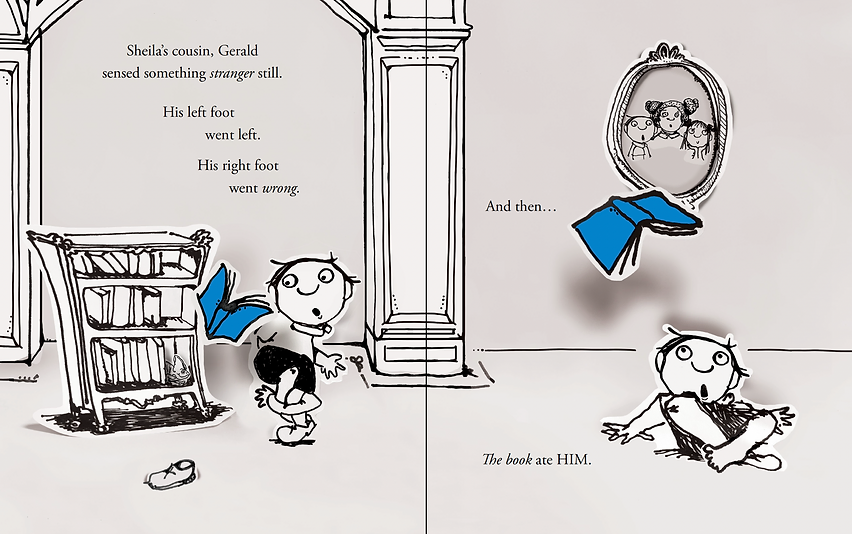
Ever wondered what it would have been like if Shel Silverstein had played around with layered papers and papercuttings? Me neither . . . until I read this book, which is so clearly one of his successors (in looks and tone alike!). I mean, I urge you to look at the endpapers alone and try to resist. Such a sense of scale! Of three-dimensionality! And then you get to the plot. So there are three Gunions, Sheila, Gerald, and Geraldine. Each one of them is eaten by a different book and, in doing so, all three have completely different reactions to the experience. First, there’s Sheila who’s book leads her towards discoveries. Gerald likes being lost, “and loved being found.” And Geraldine . . . yeah, she’s the wild child. The moral of the story? “Strange it is, strange but true, the way to eat a book, is to let the book eat you!” Classic weirdo workings going on here. From the writing to the images to the whole eating/being eaten concept. In short, a heckuva lot of fun. Highly recommended for anyone into creative book illustration and, for that matter, writing.
In the Neighborhood by Rocio Bonilla, translated by Maya Faye Lethem
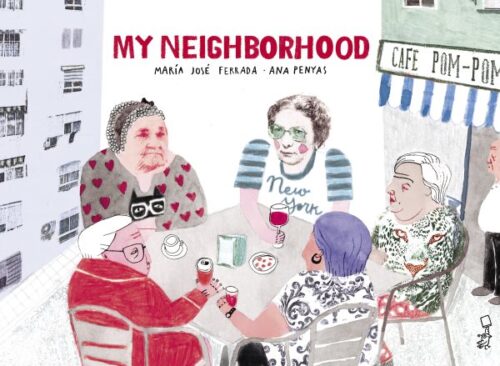
As I mentioned in a publisher preview earlier this year, this is not Ferrada’s only publication here in the States in 2022. And that is a good thing. As far as I’m concerned, the more María José Ferrada we see on our shelves, the better. Ferrada hails from Chile and you may remember her best from her 2021 publication niños: Poems for the Lost Children of Chile. My Neighborhood is a very different vibe, focusing on a single older woman during the course of a single day. We follow Ms. Marta. She lives on her own. She is older, and she is completely independent. From the photos on her wall we can tell that she’s had a full life, but she isn’t a grandmother or anything (and finding a picture book about a self-satisfied older woman who isn’t a grandma is like finding a needle in a haystack sometimes). She has a tattoo. She has a framed photo of her friends playing cards. Really, the whole book is this marvelous mix of photos and illustration, all done at the hand of the talented Spanish artist Ana Penyas. The last line sums it all up for me: “By now she knows: lives, like socks, are elastic.”
Leviathan (Adventure Game Comics #1) by Jason Shiga

The choices are yours but the answers aren’t simple. Can you crack the code of the Leviathan and the wand that keeps it at bay? Hint: Think outside the box. Oh, Jason Shiga, you mad genius, you. As someone who was head-over-heels crazy about his other book for kids Meanwhile, I’ve been waiting for him to do something else for kids for years. He hasn’t quite put the same amount of energy into this book, but that doesn’t mean it won’t muck with your brain waves a little. It’s one of those pick-your-own-path stories, and so my son and I gamely went along with it. It took us a little while, but we finally cracked the secret of it. If you want to win the book you have to listen VERY carefully to what Kanoxx the sorcerer is saying to you. Ultimately, we won, but in doing so discovered that this is, without a doubt, one of the most subversive bits of messaging we’ve seen in a comic for kids in a long time. I’m so proud. Wouldn’t have it any other way.
My Uncle Is Coming Tomorrow / Mañana viene mi tío by Sabastián Santana Carmargo, translated by Elisa Amado
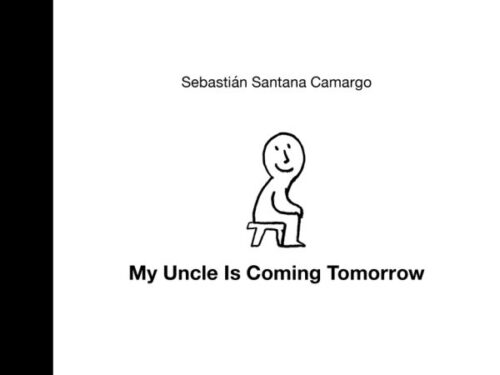
I was at the ALA Convention in D.C. this past summer when I first saw this tiny book prominently displayed in the Greystone booth. It was so small. So black and white. I was just going to skip on by when a staff member pulled it out and insisted that I give it a look. Camargo was born in Argentina and this book is dedicated to the disappeared from every nation. In that way it’s not too dissimilar to Niños: Poems for the Lost Children of Chile by María José Ferrada. Simpler, though. In this book a child is waiting for their uncle, who will be living with them. The child, just the barest outline of a person, which you can see on the cover, sits on a stool to wait. As you turn the pages they keep saying all the things that they’ll do together. However, it becomes clear that a great deal of time is passing. The child becomes a teen becomes an adult. The desires of what to do with the uncle change over time depending on the person’s age. The book really gives you a quick jolt of understanding of what it is to never see the person you’re waiting for again. A simplification but an effective one.
Myra and the Drawing Drama by Rosemary Rivera, ill. Mario J. Menjivar
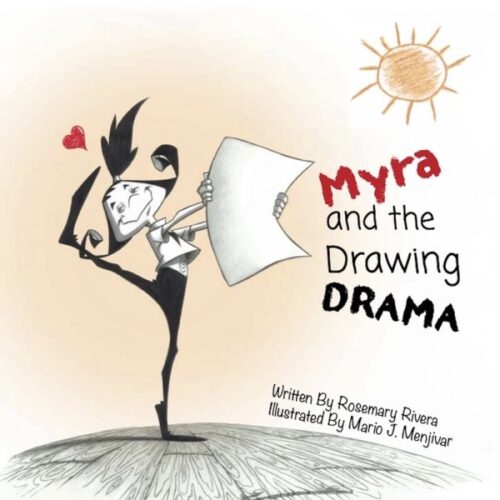
Behold! A book that’s so strange and interesting that I have difficulty parsing it in my head. Essentially, it’s a picture book about a culture that prizes adult panic over childhood creativity. Based on an incident that happened to Rosemary when she was a kid, the book follows a kooky kid who creates a picture that she thinks is marvelous. It also happens to freak out every adult that comes in contact with it. And let me tell you, when you get to that moment where you see the art for yourself, you’ll have this amazing moment of disconnect. The kid part of you will suddenly wrestle with the adult. I’ve never encountered anything quite like it in a picture book before. Utterly unique.
One & Everything by Sam Winston
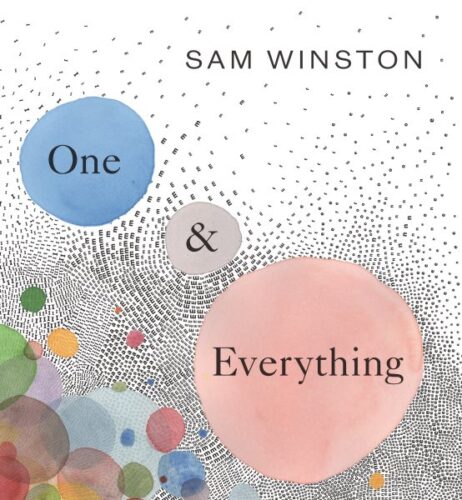
When the world was full of stories things were lovely. Then came along a story calling itself The One and it started eating all the others. A fable about disappearing languages and the stories we have to save. Actually, I really really liked this book. Even before I got to the backmatter (which is jaw-dropping) I liked the storyline. Understand first, though, that my expectations were probably pretty low. I mean, fables with shapes aren’t really my picture book bag. So imagine my surprise when I found that this story about words and language and how some languages just dominate others, really hit home. I mean, this is basically about colonialism, but in the gentlest way possible. But what I really loved was how well Mr. Winston just stuck that ending. I did not know where this whole thing was going, and I loved the solution. And then I saw the backmatter. The fact that he has worked in fifty different “Scripts” (which is to say, written languages) dead and alive is remarkable. But just looking at the two page spread of everything from Rejang to Myanmar to Cherokee is jaw-dropping. Then you read about how he included specific scripts into different emotional moments of the story, like the Phaistos Disk as the old story. Oh man. This book is so cool. You have to check it out.
The Queen in the Cave by Júlia Sardà
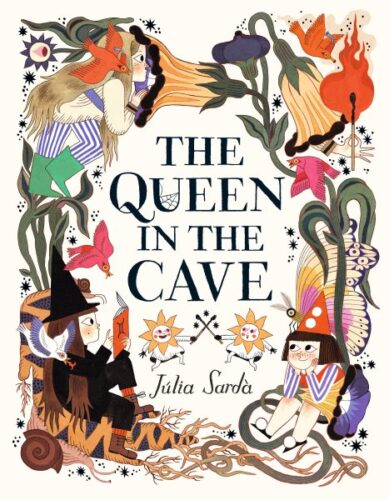
One day Franca decides that she is going to plunge into the unknown to seek a marvelous queen. When her sisters come along, what will they find, and will they ever get back? A hypnotic, cacophony of chaos. I like giving you books that’ll wake you up a bit. We’ve seen a lot of children’s books that ponder the end of childhood, like Peter Pan or that really strange Jerry Spinelli book Hokey Pokey. I don’t remember ever seeing a book that discusses how the younger siblings feel when their older sibling starts to pull away from them and grow apart. This book is essentially one great big metaphor for that, but done in Sardà’s inimitable (which is to say, wackadoodle) style. I really liked it, in a strange way. From a kid’s point of view, this is kind of what happens when adolescence calls your sister away. A lot to chew on here.
So Much Snow by Hyunmin Park
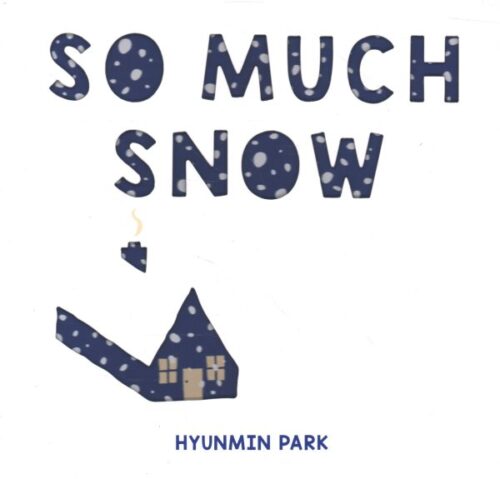
Ah, the vertical picture book. Every year we get one here and one there, but ultimately they’re risks that a lot of publishers don’t want to make. That’s why, sometimes, you need an import. This book (which is not to be mistaken for a book with the same name that came out this year by Kristen Schroeder and Sarah Jacoby) received a Bologna Ragazzi Award Special Mention last year, and I can see why. The title is actually cut out of the cover, revealing the falling flakes behind. A ton of snow has come from the sky and our narrator tells us that they’ve never seen so much. Right from the start the reader is encouraged to hold the book vertically, and the art really makes use of that by showing a delightfully steep incline through what looks to be a mountain of snow. At this point, Park starts to use negative space to show the characters creating a giant . . . something. The reveal of what that something is (and the sheer scale of it!) is worth the price of admission alone. There’s even a gatefold!! If you’ve the first snowy day of the season and you want to do a memorable storytime that’ll knock the socks off of the attending preschoolers, this is the book you’ll want to grab.
Supposing… by Alastair Reid, ill. JooHee Yoon
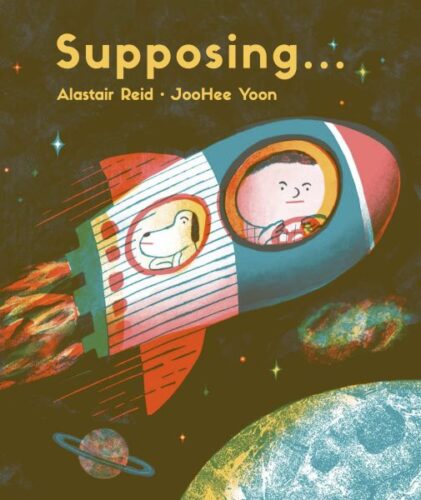
ADVERTISEMENT
ADVERTISEMENT
Sometimes you just gotta sit on a book for a while and read it in the right mood. The first time I read this Reid/Yoon collaboration I was in entirely the wrong headspace. I think I was hoping for something rote that could tell me a single story. I wasn’t really prepared for this oddly charming collection of suppositions. This book reads like something Ruth Krauss would have come up with, if she’d been born in 2001 rather than 1901. Each section includes a wild idea, always starting with the word “Supposing”. “Supposing there were 12 of me…”, “Supposing I appeared on television answering questions and there was one question which nobody could answer and although I knew the answer instead of saying it I just burped…”, “Supposing I went bald.” Naturally these sound like nothing so much as writing prompts to me, and I suspect an enterprising creative writing coach could have a field day with this book. But it’s also a perfect title to just set young minds loose. JooHee Yoon must have been so grateful to get this manuscript. It is, in many ways, an illustrator’s dream job, and a mighty wacko result. Hard not to love this one. Just make sure your mind’s in the right space.
The Upside Down Hat by Stephen Barr, ill. Gracey Zhang
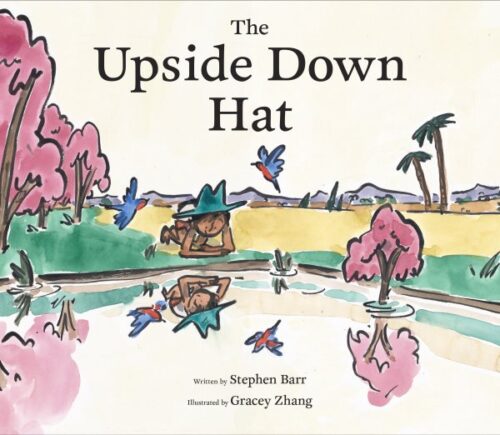
Chronicle calls this book a fable. I call it the picture book that made me sit and stare into space for a long time after finishing it. Truth be told, I’m still staring into space. I literally went right back to the beginning of the book again once I was done to see if there was something I’d missed along the way, I was so thrown by what I read. Essentially, this is not a realistic story, but tell that to my brain. It desperately wants this book to follow old established rules of picture book storytelling, a request that Barr and Zhang adamantly refuse. In this tale a boy wakes up with nothing but a hat. Everything else he ever had is gone. As he searches, the hat becomes his lifeline, providing water to drink, food to eat, shade, and more. Then he sleeps, has a dream in which he “turned the mountain upside down” (extra points to Zhang for figuring out how to illustrate THAT one!) and finds everything he lost. Only when he wakes, his hat is gone. And what’s inside of it when he finds it . . . well, you’ll have to see for yourself. I tell you, I don’t quite understand this book but I keep. Coming. Back. There’s something hypnotic about it and, in spite of the fact that the kid is always alone, oddly comforting. Not a book for all children but for the right ones, there’s nothing else out there like this.
The Wolf Suit by Sid Sharp
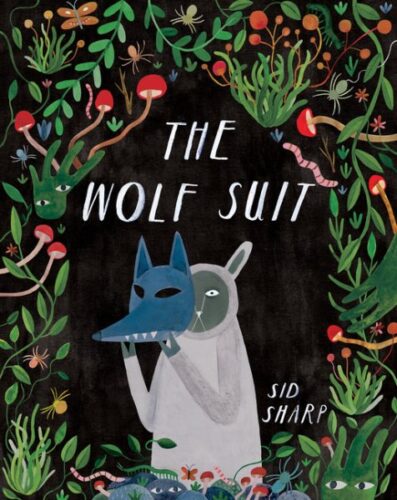
I like a book so weird I don’t know where to put it. I like a book so weird it should live in its own little section of the library or bookstore by itself. Maybe someone could build it a tiny apartment out of cardboard underneath a sign that reads This Book Is Too Weird To Live Anywhere Else. Because where exactly do you put this title? In the graphic novels and comics? In the early chapter books? Me, I put it here on this list and I regret nothing. The story is just so strange and charming that I couldn’t help but adore it. Our star is Bellwether Riggwelter (are you not entertained?) a sheep that lives on his own and is perfectly happy about that. Unfortunately, Bellwether is totally terrified of wolves, and with good reason being a sheep and all. One day he decides to go out into the woods to pick some berries but a close encounter with a wolf scares him back home. Once there, he gets the clever idea to create a wolf suit. Now he can get out and about. Trouble is, when he runs into “other” wolves they invite him out that night. Will his secret be revealed? Did I see the twist in this story coming? I did not. Should I have? Probably. But as far as I’m concerned this is a book with a moral that refuses to moralize. It just wants to be weird and wild. I am okay with that.
Yellow Dog Blues by Alice Duncan, ill. Chris Raschka
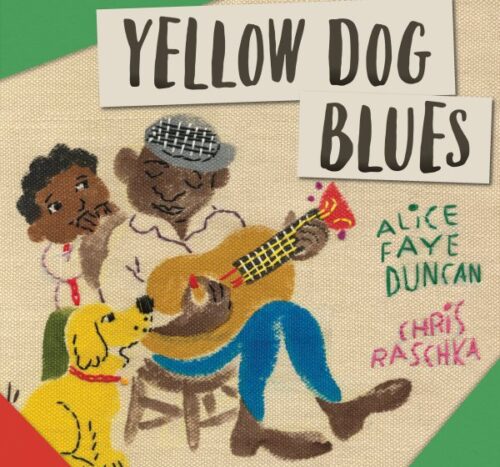
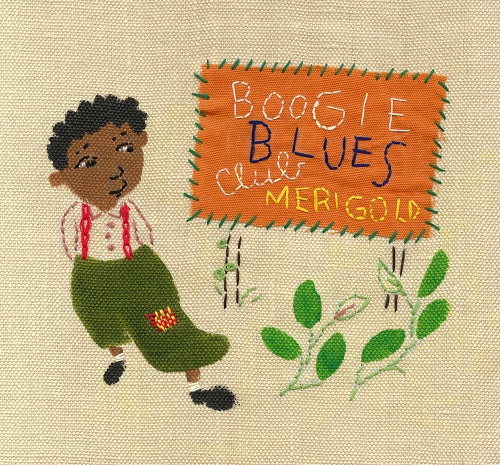
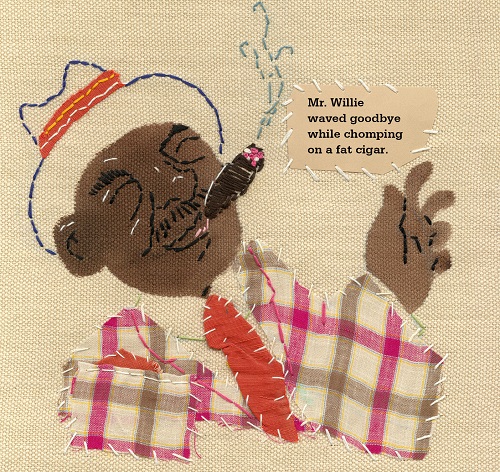
Where did Yellow Dog go? Did he really hit Highway 61 and keep on running? An ode to the Blues, music, and dogs with stars in their eyes everywhere. Visually, this may be some of Chris Rashka’s best work. For whatever reason he’s decided that the best way to illustrate this book was to do so with paint on fabric and embroidery. The end result is that it definitely has an old-fashioned feel. I can tell why he was attracted to the text too since it’s all about historical markers that are directly tied into the Blues. Now that’s all well and good from a grown-up’s perspective, but how would a kid like this book? Essentially it’s about a dog that runs away and the attempts made to find it. But the dog is never recovered, hence the title. Still, you keep coming back to this story and its storytelling. It’s like nothing else I’ve seen in a long long while.
Want to see other lists? Stay tuned for the rest this month!
December 1 – Great Board Books
December 2 – Picture Book Readalouds
December 3 – Simple Picture Book Texts
December 4 – Transcendent Holiday Picture Books
December 5 – Rhyming Picture Books
December 6 – Funny Picture Books
December 7 – CaldeNotts
December 8 – Picture Book Reprints
December 9 – Math Books for Kids
December 10 – Gross Books
December 11 – Books with a Message
December 12 – Fabulous Photography
December 13 – Translated Picture Books
December 14 – Fairy Tales / Folktales / Religious Tales
December 15 – Wordless Picture Books
December 16 – Poetry Books
December 17 – Unconventional Children’s Books
December 18 – Easy Books & Early Chapter Books
December 19 – Comics & Graphic Novels
December 20 – Older Funny Books
December 21 – Science Fiction Books
December 22 – Fantasy Books
December 23 – Informational Fiction
December 24 – American History
December 25 – Science & Nature Books
December 26 – Unique Biographies
December 27 – Nonfiction Picture Books
December 28 – Nonfiction Books for Older Readers
December 29 – Best Audiobooks for Kids
December 30 – Middle Grade Novels
December 31 – Picture Books
Filed under: 31 Days 31 Lists, Best Books, Best Books of 2022
About Betsy Bird
Betsy Bird is currently the Collection Development Manager of the Evanston Public Library system and a former Materials Specialist for New York Public Library. She has served on Newbery, written for Horn Book, and has done other lovely little things that she'd love to tell you about but that she's sure you'd find more interesting to hear of in person. Her opinions are her own and do not reflect those of EPL, SLJ, or any of the other acronyms you might be able to name. Follow her on Twitter: @fuseeight.
ADVERTISEMENT
ADVERTISEMENT
SLJ Blog Network
One Star Review, Guess Who? (#202)
More Geronimo Stilton Graphic Novels Coming from Papercutz | News
Parsing Religion in Public Schools
Take Five: LGBTQIA+ Middle Grade Novels
ADVERTISEMENT



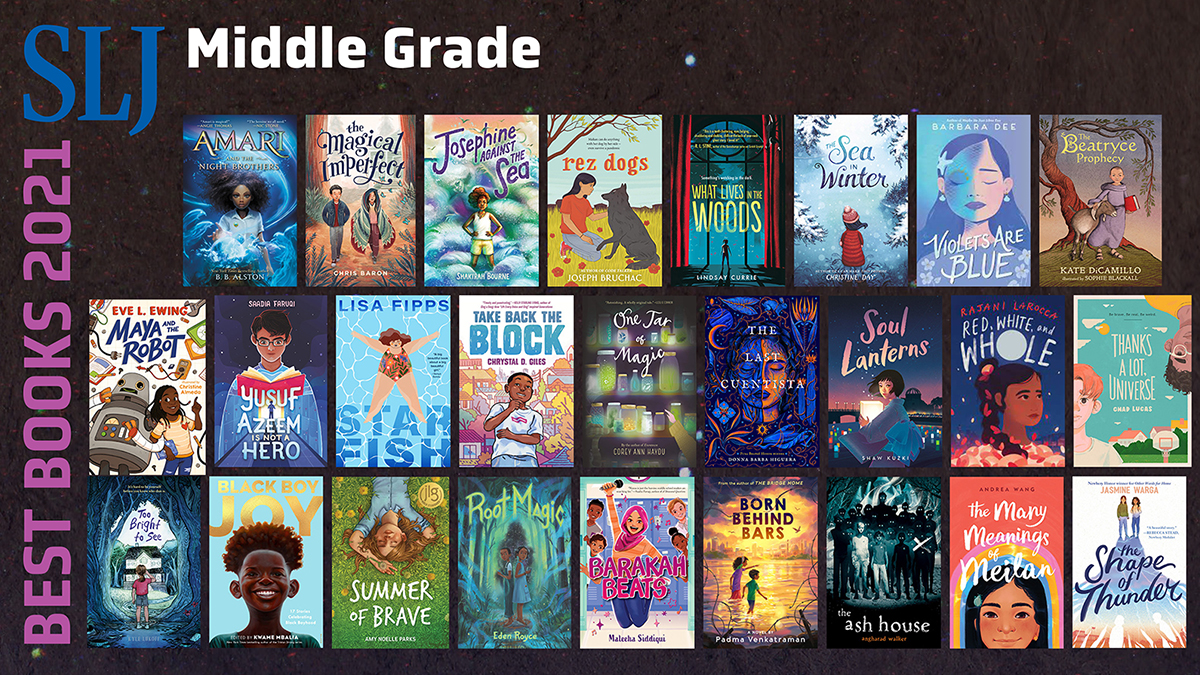
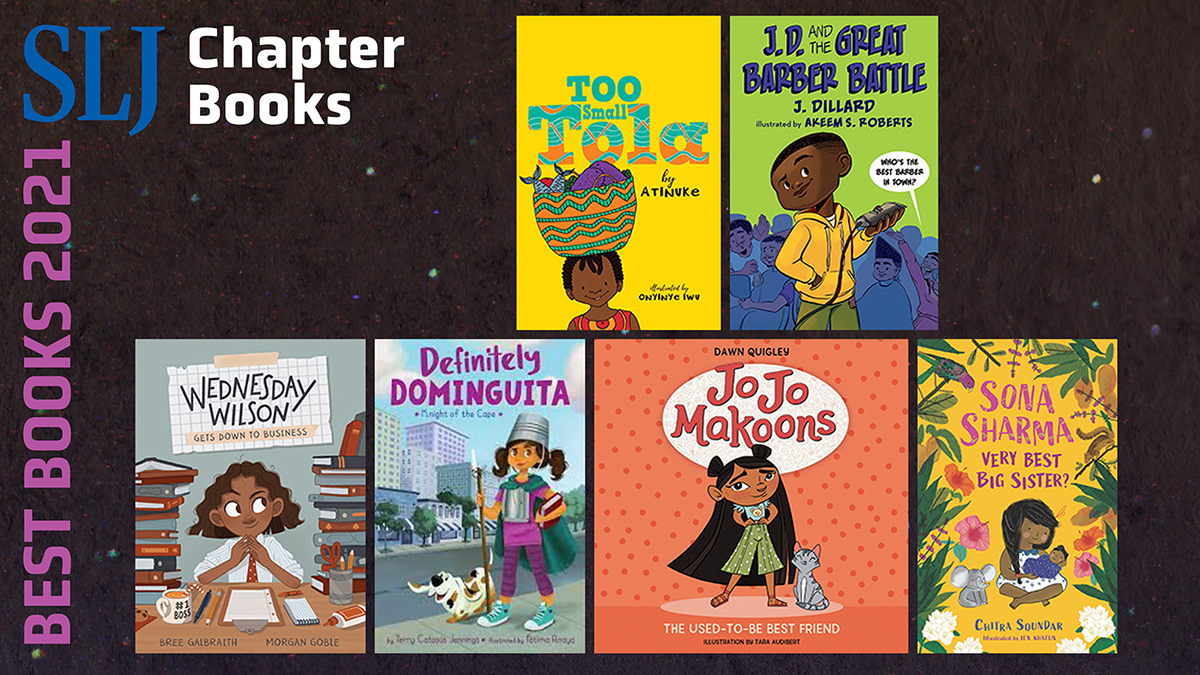

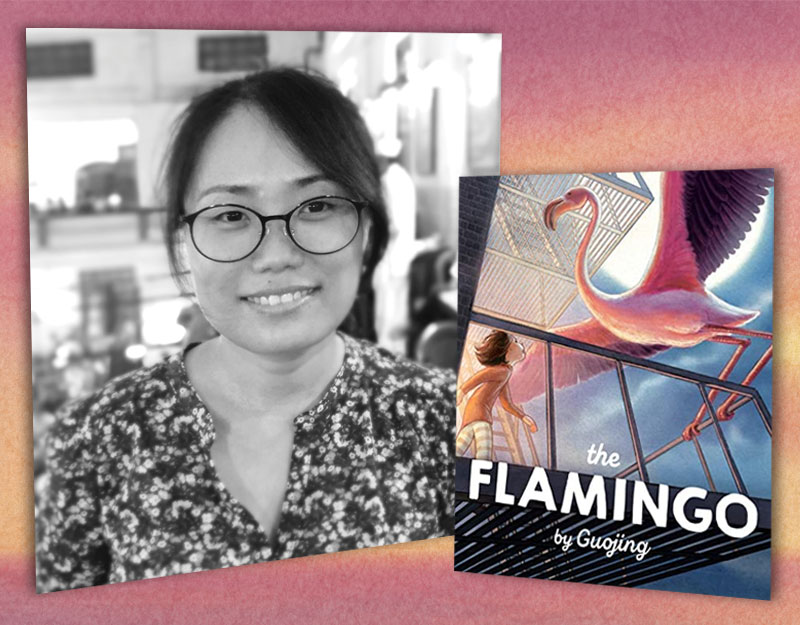

Perhaps JooHee Yoon didn’t get a manuscript of “Supposing”, but the 2010 re-release edition illustrated by Bob Gill—or the original 1960 edition illustrated by Abe Birnbaum?
https://www.nyrb.com/blogs/nyrb-news/19371585-supposing?_pos=2&_sid=8ceced9c5&_ss=r
https://hdl.handle.net/2027/mdp.39076002717069
I’d love to see someone do a comparison of the illustrations in these different editions of Supposing. I wonder if the text has been updated over time as well?
Oh heavens. This is what comes of not reading the publication pages. You’re right, the text is the same. Or, at least, some of it is. It does feel as though some changes may have been made.
Supposing a children’s literature blogger didn’t do her homework properly . . .
Well…c’est la vie—and merry, happy, blessed everything, Betsy. You keep us readers on our toes and save us from Sudoko puzzles.
You still rank as my favorite children’s literature blogger/librarian in the whole world. During Decembers, I wait till 10pm every night (I’m NA West Coast) just to be among the first to read your lists a day early. Ha! And thank you.
Back to “Supposing,” I wonder if one definition of a classic children’s book—as discussed on podcasts by you & Kate—might require that the text be illustrated by more than one person over time? “Supposing” obviously is, but there are so many others: Mother Goose nursery rhymes; RL Stevenson’s A Child’s Garden of Verses; fairytales, tall tales & fables such as Alice in Wonderland, The Velveteen Rabbit, The Little Engine That Could…and more.
Also the opposite occasionally happens: where a “classic” character or idea gets rewritten and updated. So, Richard Scarry’s The Polite Elephant becomes Eunice Moyle’s Kindness Rules. Margot Zemach’s It Could Always Be Worse becomes Julia Donaldson’s A Squash and a Squeeze. Rachel Field’s Hitty becomes Kate DiCamillo’s The Miraculous Journey of Edward Tulane. These “updates” aren’t usually editions & don’t always cite their sources, but there are influential images that get reworked over & again.
Anyway, you’ll have your own & more examples—or exceptions, since there’s always the alt-compulsion to do something new & different & other. That’s why I’m here reading your reviews of new books. Thanks, again!
It Could Always Be Worse is a folktale and folktales often get re-illustrated, re-worked, re-written. Another Yiddish folktale is Joseph Had A Little Overcoat. The Simms Taback version is perhaps the best known but there are many others.